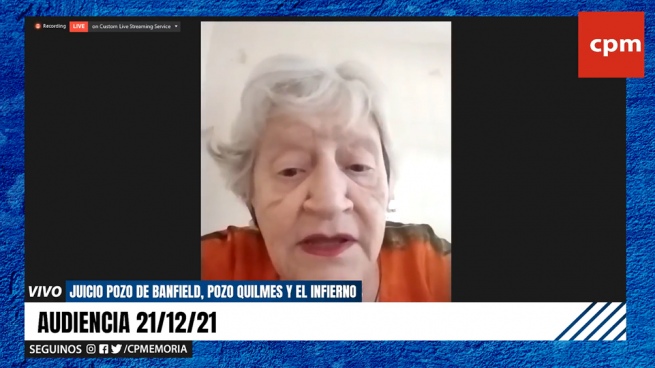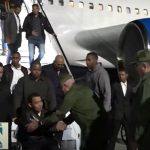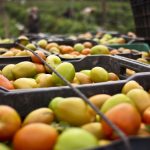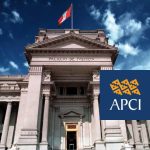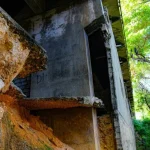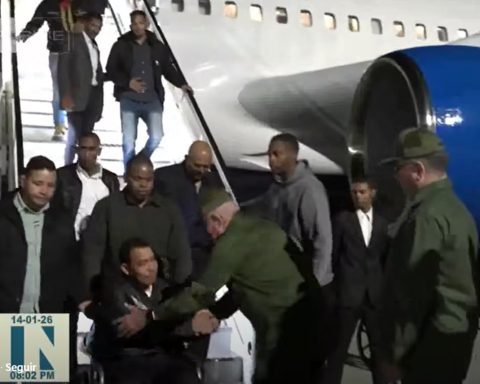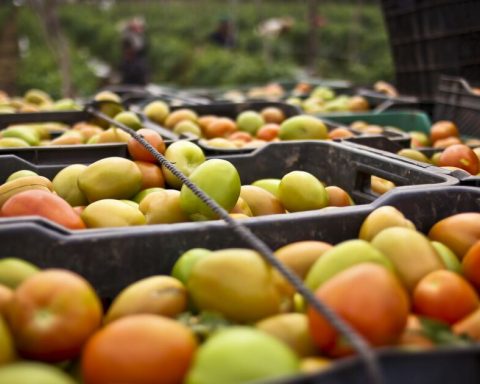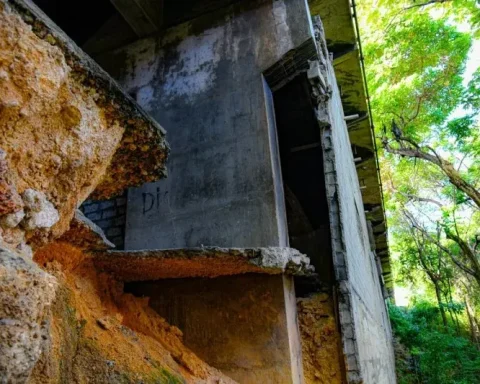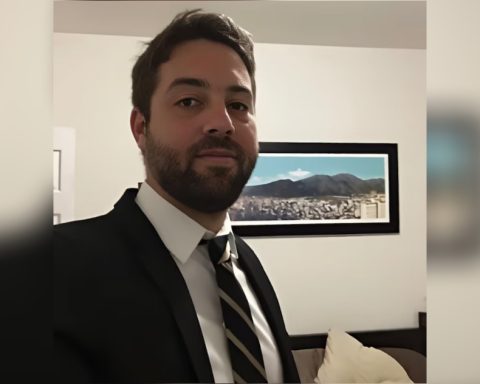A woman survivor of several clandestine detention centers of the last civic-military dictatorship told this Monday before the Federal Oral Court 1 (TOF1) of La Plata, the painful struggle she had to face after being released and with the help of Grandmothers of Plaza de May to obtain the restitution of his two children appropriated as “war spoils” by the de facto government, María Eugenia, then 1 year and 4 months old, and Felipe, 4 months old.
This is Ana María Caracoche (77), who defined herself before the TOF 1 that investigates crimes against humanity committed against almost 500 victims, as “kidnapped, detained disappeared, tortured and disappeared former detainee.”
The woman said that her first illness occurred in March 1977, when “my daughter María Eugenia Gatica Caracoche, aged 1 year and 4 months, disappeared when she was kidnapped along with the married couple Abdala and Sabino, and their son, in the neighborhood. platense of Los Hornos “.
Ana María was later transferred to the Banfield Well, where she shared captivity with other women whose names she listed before the Court
“A month later they kidnapped me, in April 1977, in the city of Berisso, when I was with my 4-month-old son Felipe. To kidnap me they broke my arm and that’s how they took me to the La Cacha center,” Caracoche said. and detailed that already in that place she was “tortured in the arm and legs.”
“Nobody imagines how terrible the detention conditions are when one loses freedom; only those who lose freedom know what that means,” she emphasized, visibly anguished.
Ana María was later transferred to the Banfield Well, where she shared captivity with other women whose names she listed before the Court: “I saw Adriana Calvo with her little daughter Teresita, Silvia Vaencia, Cristina Navajas, Alicia D Ámbra, María Garín and Eloísa Castellini, I think he had a son on the floor of the cell. “

Then she said that after being detained for a month she was released and had to look for her two appropriate children: María Eugenia, who was 1 year and 4 months old, and Felipe, who was 4 months old.
“The boys were war spoils of the dictatorship, that was clear from the beginning,” said the woman who, after living in hiding until 1980 and then going into exile in Brazil, contacted the Grandmothers of Plaza de Mayo, who they helped locate and retrieve their two children.
For the crimes in the Well of Banfield and Quilmes, two of the largest clandestine detention centers that operated in the province of Buenos Aires, the crimes suffered by 429 victims are tried
“Felipe disappeared when he was 4 months old and he returned when he was 8 years old. When (the recovered children) return to the family that is a moment that cannot be explained, it is a deep recognition. Felipe came, hugged me, squeezed me and passed his head over my chest. That is finding identity. That is why I tell those who lost their identity not to be afraid to know their true story, “she said excitedly.
In September 1984, Ana María and Oscar Gatica, her husband, obtained Felipe’s reinstatement, without resistance. The same did not happen with María Eugenia.
“Among all the photos that came to Abuelas daily, one day I found one that told me it was her,” Ana María said.
In September 1984, Ana María and Oscar Gatica, her husband, obtained Felipe’s reinstatement, without resistance. The same did not happen with María Eugenia
María Eugenia had been registered as the daughter of a Buenos Aires police commissioner and was only able to be reinstated in September 1985.
“(María Eugenia) came back when she was 9 years old,” remarked Ana María and stressed that “the life story that I told here is a story rescued from memory and it is very difficult to do. My testimony, for the history of Latin America, is a point ; for me it is my whole life “.
“Telling the truth is not revenge, it is justice. For the 30,000 missing persons present,” he concluded his testimony.
In addition, during this day the testimony of Eduardo, Ricardo and Gerardo D´Ambra, Carlos and Alicia’s brothers, kidnapped and disappeared in the last military dictatorship, was heard. The woman was seen at the Banfield Well.

In their statements, the three brothers regretted the time it took for justice to initiate this trial since, they emphasized that “here would have to be our parents, now deceased, who are the ones who initiated the inquiries and spoke everywhere to find Carlos and Alicia “.
“I remember the song ´Honrar la vida´ and I can say that my two brothers, in the few years they lived, honored life, they did it and they had to live the unspeakable abuse by the State,” said Eduardo D´Ambra.
The TOF 1, made up of Walter Venditti, Esteban Rodríguez Eggers and Ricardo Basilico, judges the former Minister of Government of Buenos Aires during the dictatorship, Jaime Smart, for the crimes committed in the Banfield Well and the Quilmes Well; the former Director of Investigations of the Buenos Aires Police, Miguel Etchecolatz; the former police doctor Jorge Antonio Berges and the accused Federico Minicucci; Carlos María Romero Pavón, Roberto Balmaceda and Jorge Di Pasquale.
Etchecolatz, Berges and Smart and former police officer Miguel Angel Ferreyro are also accused of crimes against humanity committed in the center known as “El Infierno”.
He also began to judge Guillermo Domínguez Matheu; Ricardo Fernández; Carlos Fontana; Emilio Herrero Anzorena; Carlos Hidalgo Garzón; Antonio Simón; Enrique Barré; Eduardo Samuel de Lío and Alberto Condiotti.
Etchecolatz, Berges and Smart and former police officer Miguel Angel Ferreyro are also accused of crimes against humanity committed in the center known as “El Infierno”.
For the crimes in the Pozo de Banfield and Quilmes, two of the largest clandestine detention centers that operated in the province of Buenos Aires, the crimes suffered by 429 victims are tried and about 400 witnesses are expected to testify.
Etchecolatz, civilian Jaime Smart, former repressor Juan Miguel Wolk (also tried by both Pozos) and former Police Miguel Angel Ferreyro.
